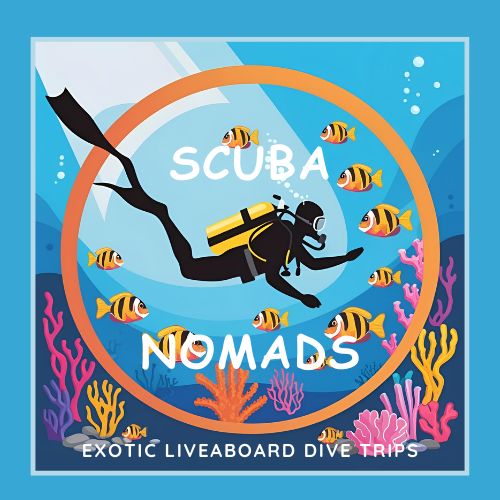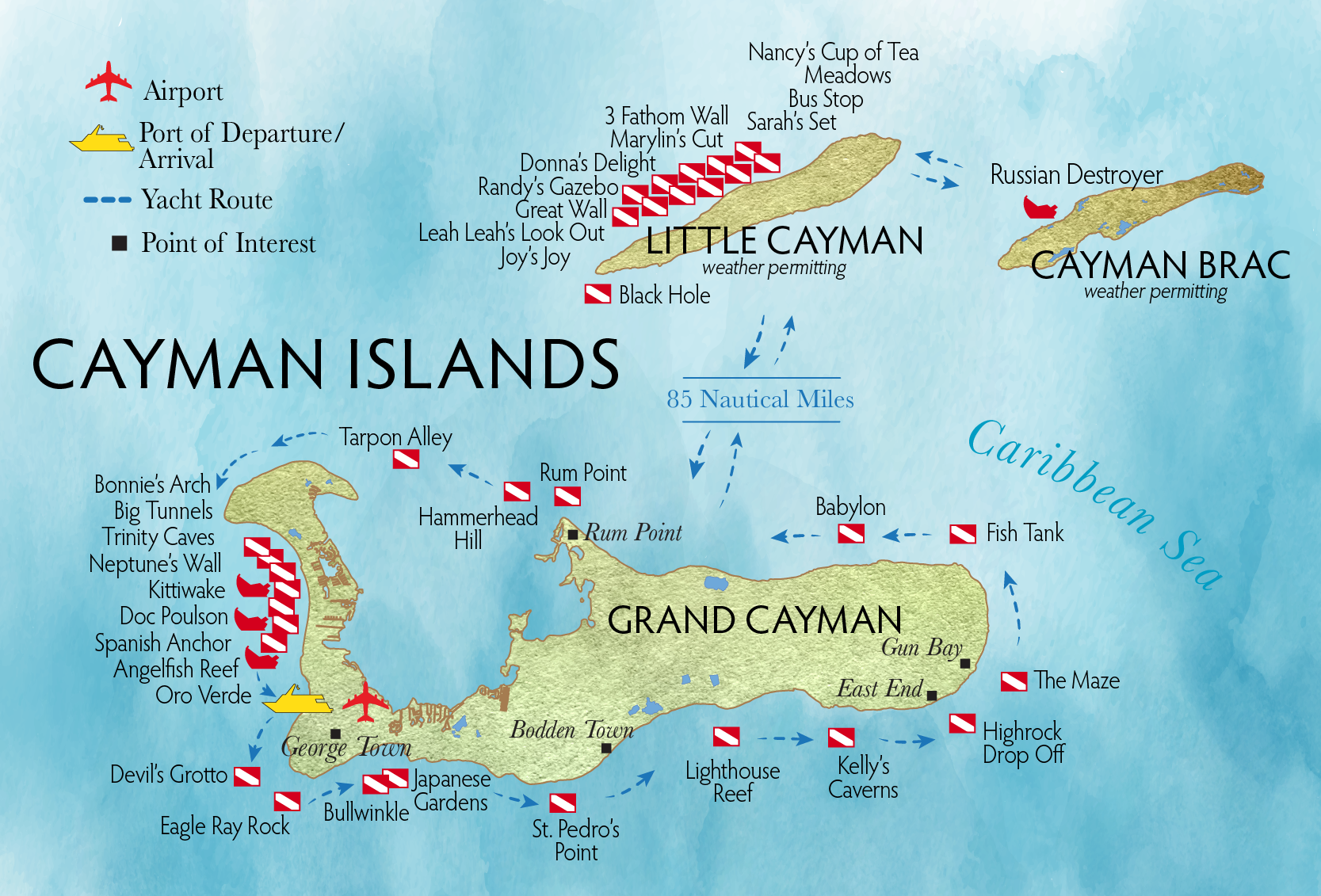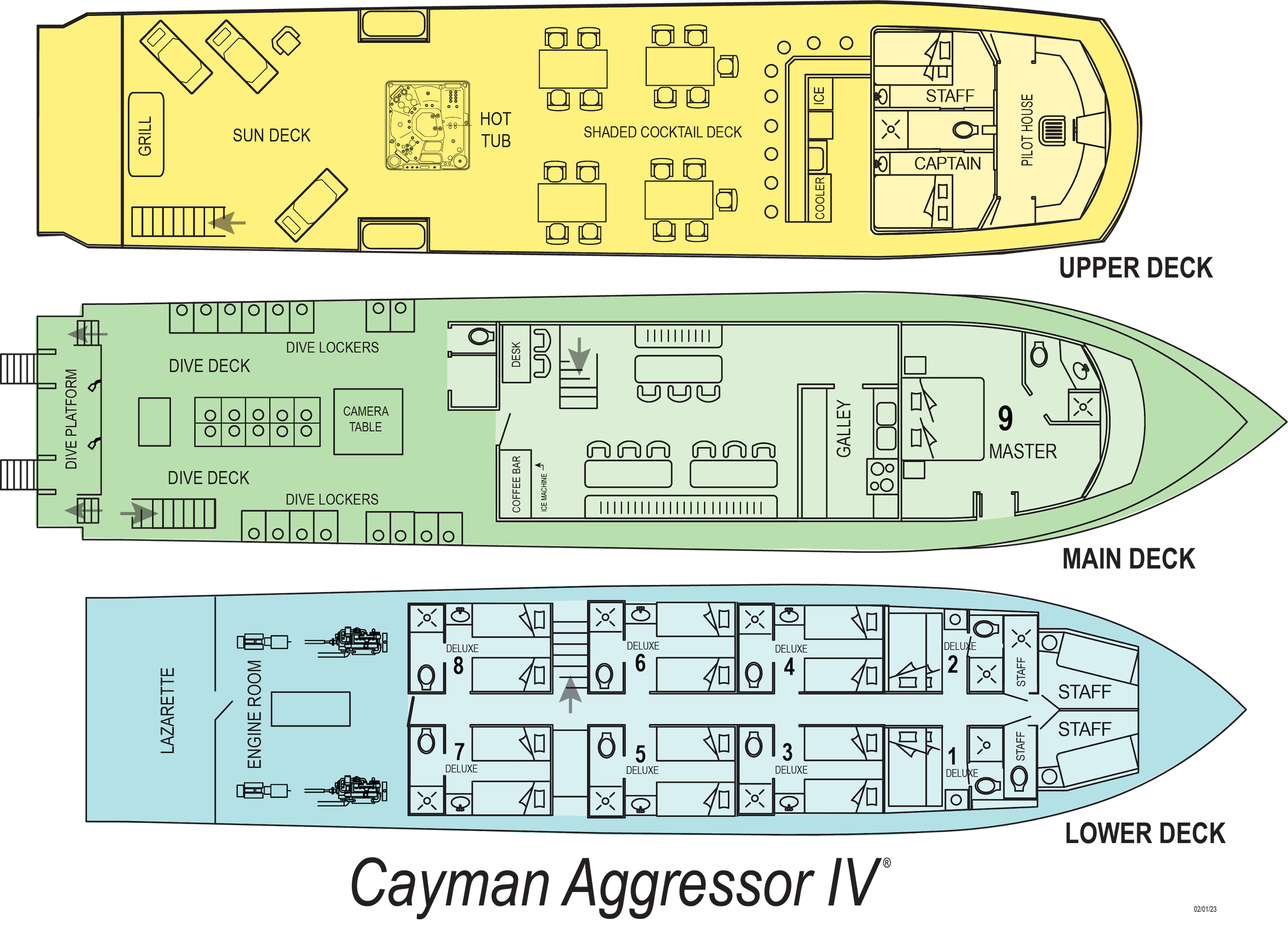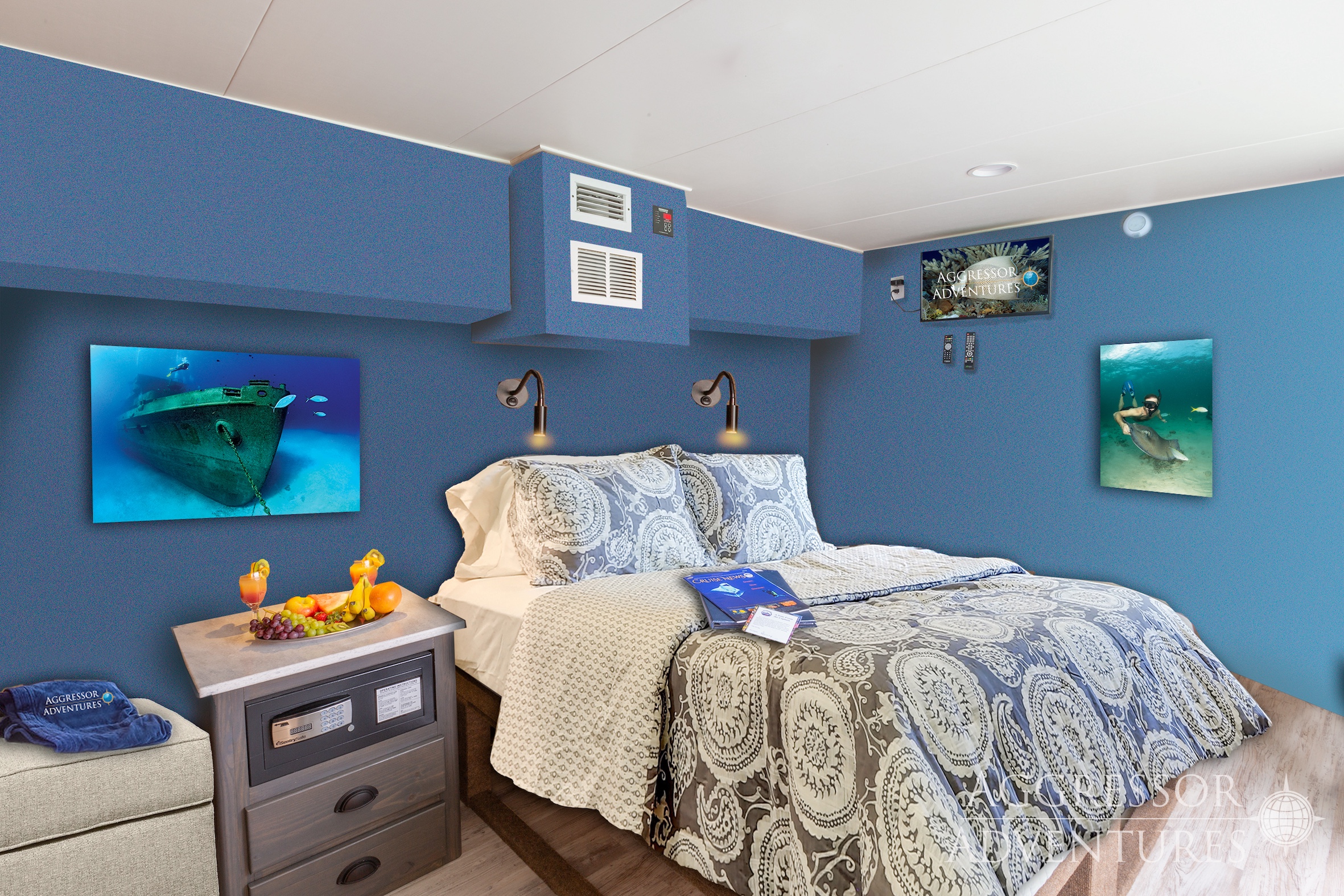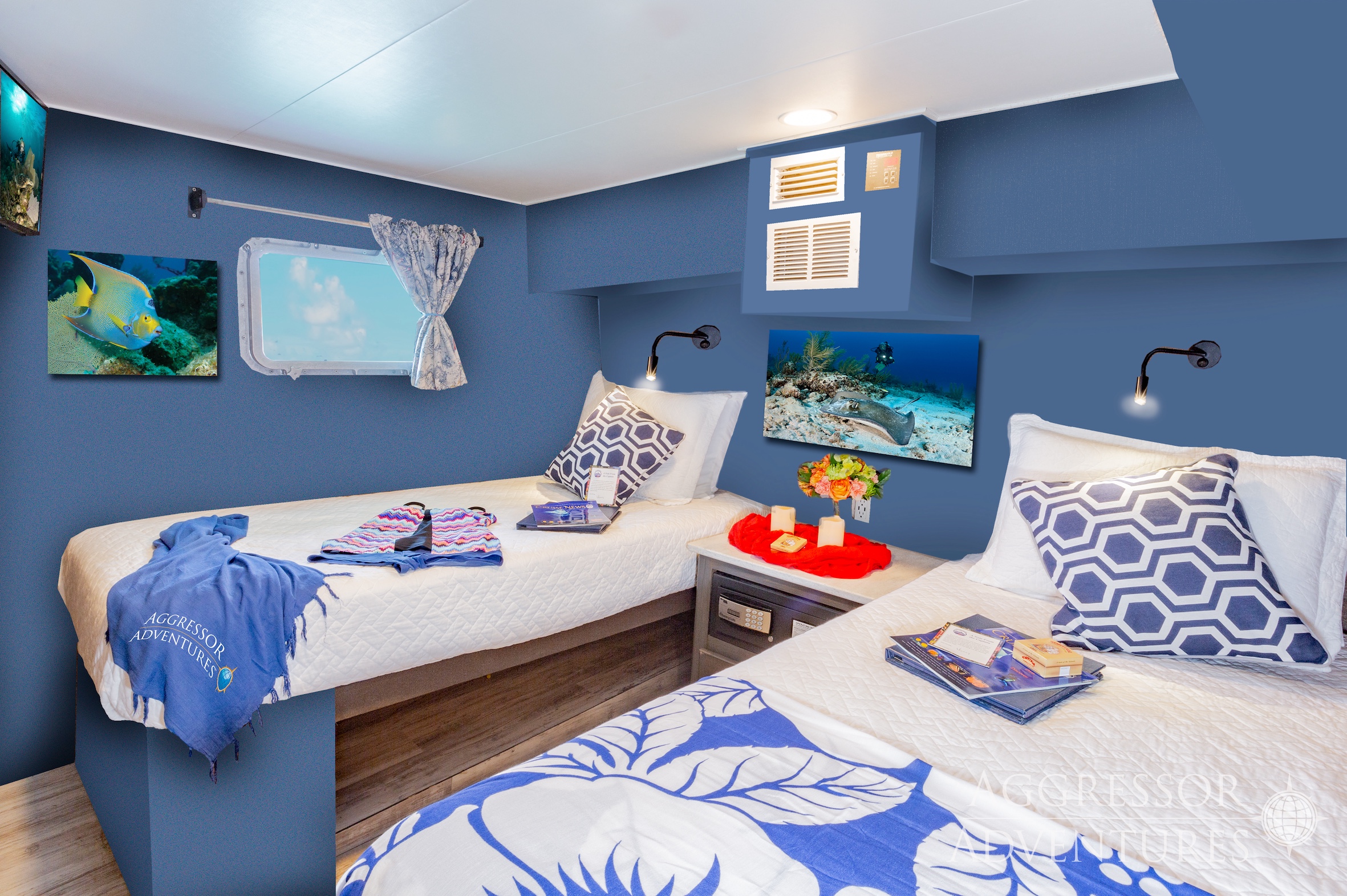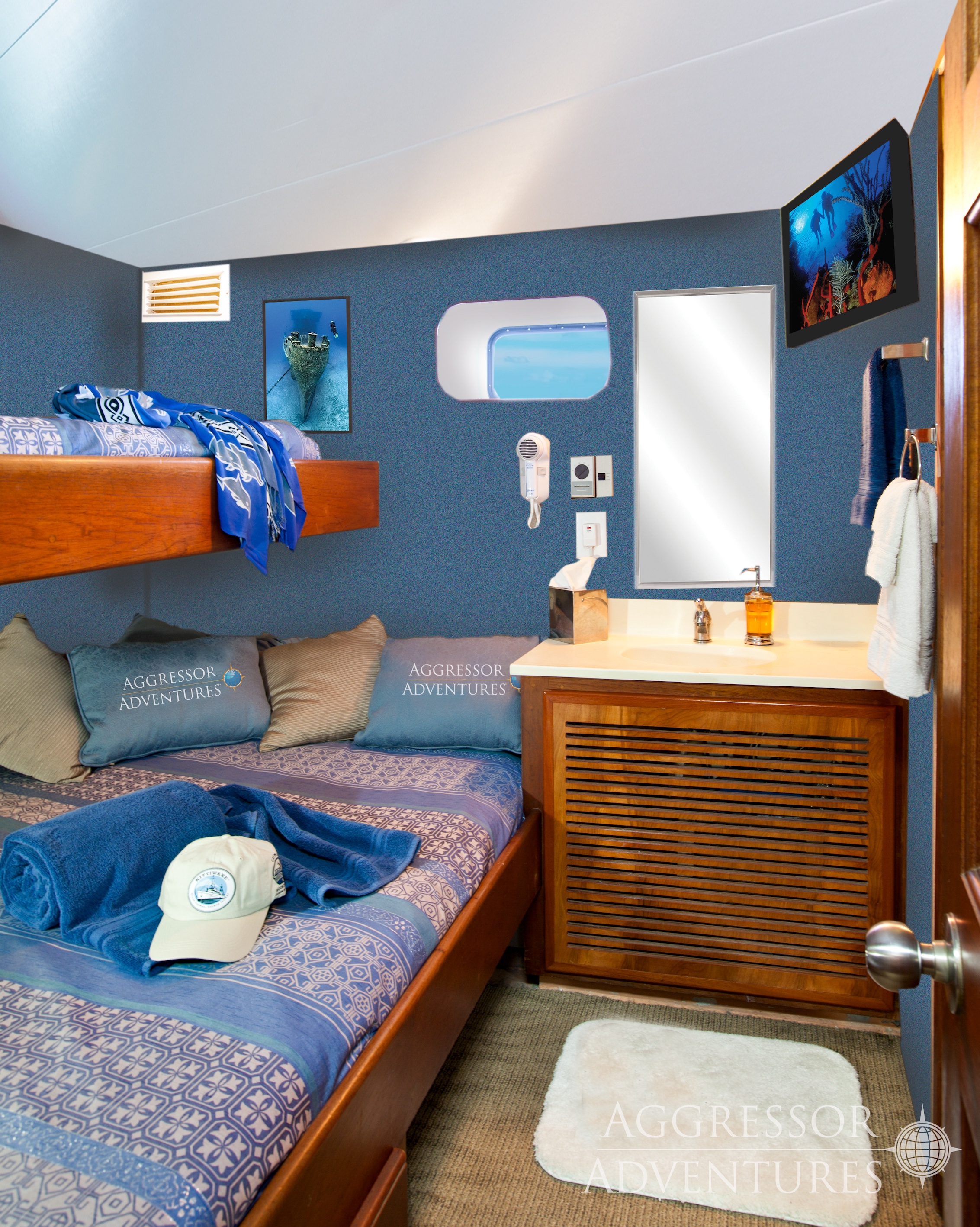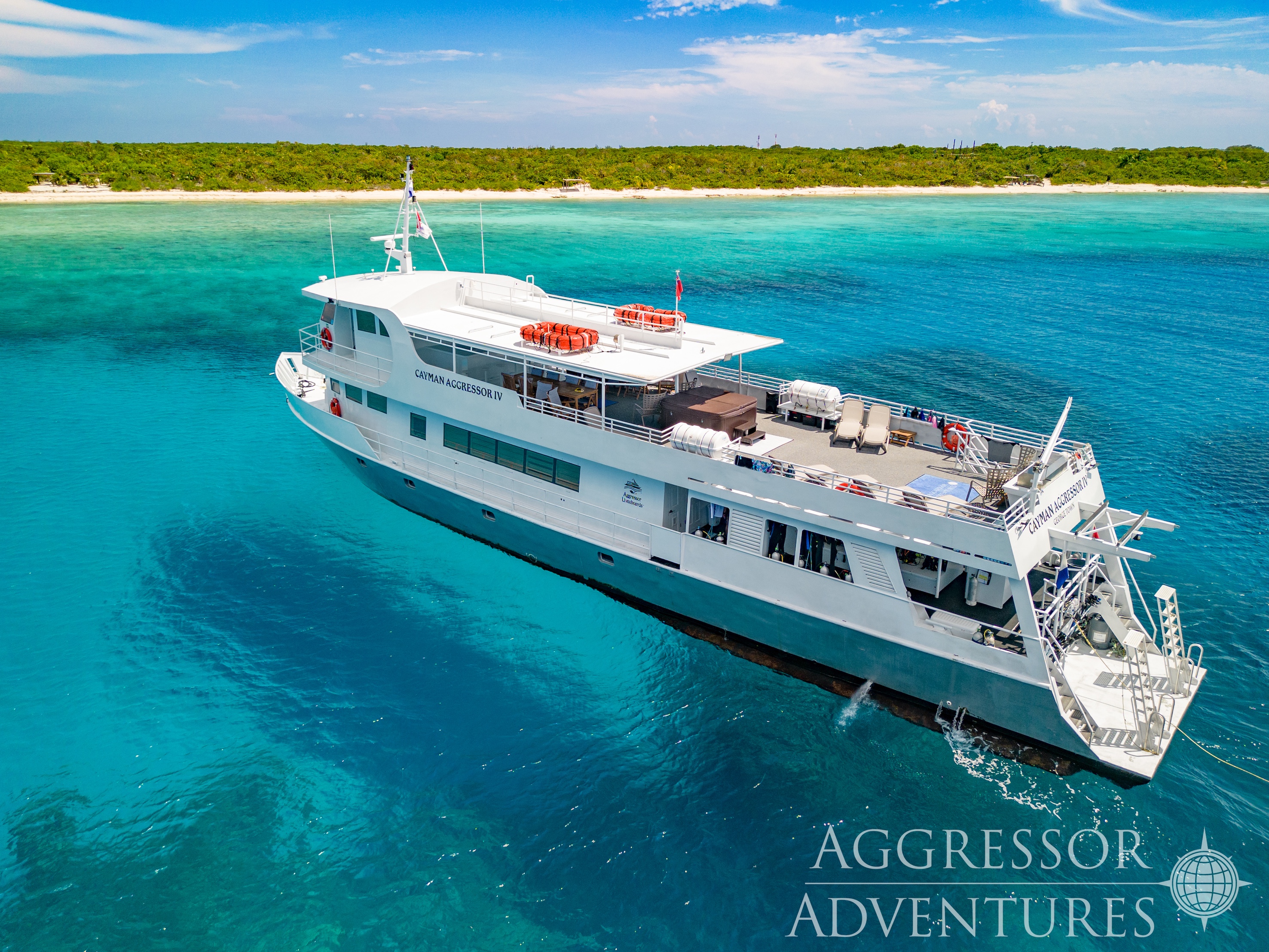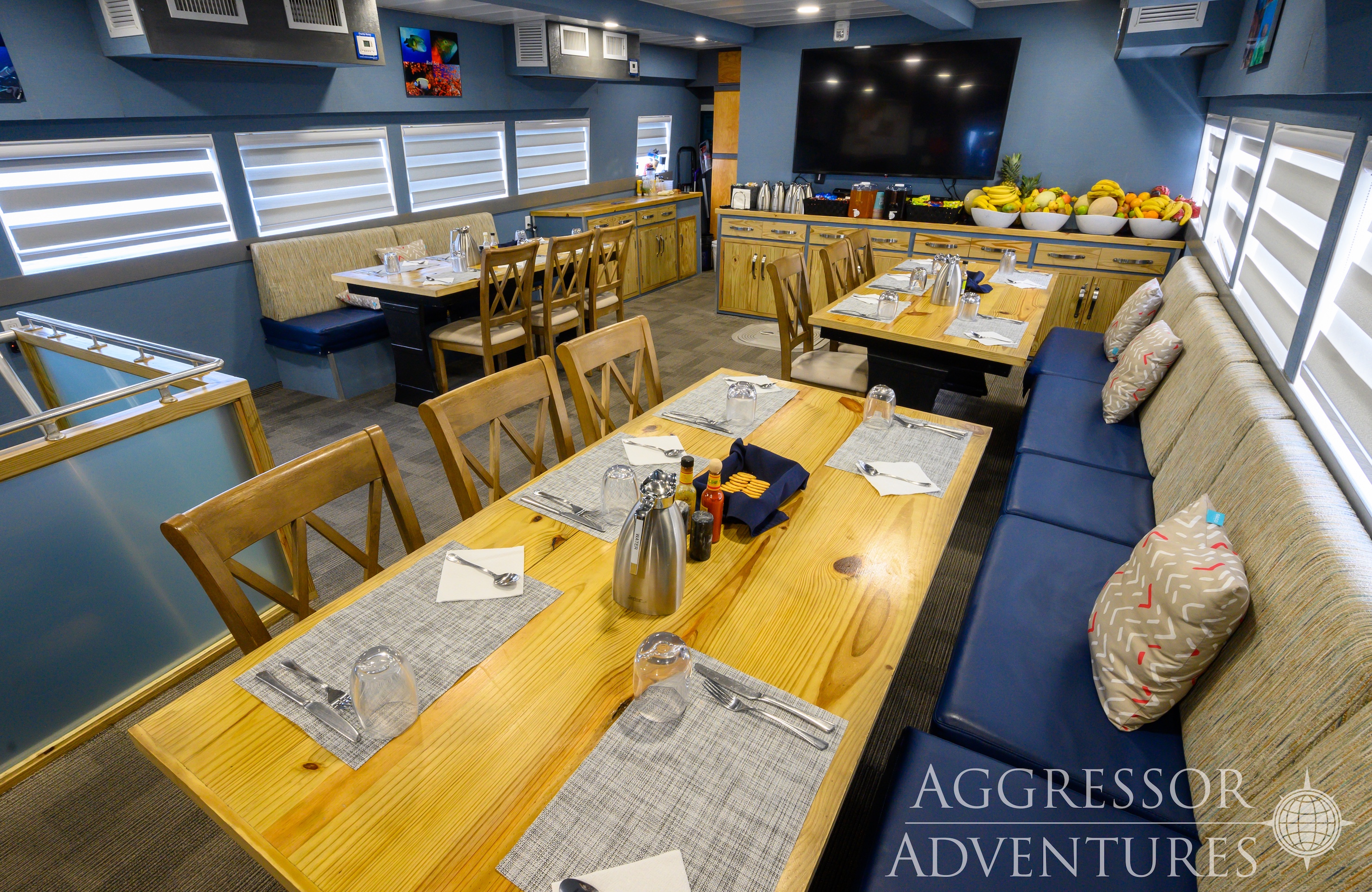7 Night Grand Cayman/Grand Cayman Dive Sites
Grand Cayman
Devils Grotto/Eden Rock
“One of the dives that made Grand Cayman so famous,” is how many describe this site. Located just off the shore outside of George Town, one can explore the passages of these two (2) dive sites. Maximum depth is 14 metres.
Doc Poulson (wreck)
Sitting in an open sandy area, with coral reef nearby, the small cable laying vessel was sank for the purpose of a wreck site. Good growth on the wreck provides a home to many juvenile fish including the pygmy file fish. Look for bristle worms on the green tube sponge located on the vessels spotlight.
Eagle Ray Rock
Found outside of Smith Cove, Eagle Ray Rock is noted for the “L” shaped passage on this large coral formation.
Grand Cayman
Grand Cayman provides a wide variation of reef life and fish – everything from juveniles to spotted eagle ray and sometimes a shark.
Depending on the side of the island you are diving, you will find dramatic walls starting from 15 m.- 21 m. The shallows will feature a “spur-and-groove” coral formation or sites that are more noted for their swim-thrus. More noted for its small reef life, don’t be surprised to spot a turtle at any time, or find a southern stingray feeding nearby.
M/V Kittiwake
Sunk as an artificial reef in 2011, The Kittiwake, a former submarine rescue vessel (ASR-13) rests in 20 metres depth at the bottom, and only 4.5 metres from the surface, making her ideal for both divers and snorkelers. You can swim overhead and see the main decks and topography of the ship, plus take a look down the smoke stack that opens up straight down to the bottom of the hull and the engine rooms. There is no end of rooms to explore within this wreck.
Ore Verde (wreck)
A staple of Grand Cayman diving, this wreck today lies in pieces against a section of coral reef and provides a home to many fish, both during the day and at night (midnight blue parrotfish). Hordes of chub, jacks, and snapper are spotted during the day. Always be aware of spotted morays or a green moray eel.
Rum Point Dropoff (White Stroke Canyon)
Coral plates make up this site just outside the cut of Grand Cayman’s Rum Point. As all North Wall sights go, spotted eagle rays, turtle, channel clinging crab and lobster can all be found in this region.
Sensation Wall (Hammerhead Hill)
Found in the middle of the North Wall, this site was named for the coral formation that the mooring pin is set. Yes! You might see the elusive hammerhead here, but certainly keep an eye out for spotted eagle rays.
Stingray City
An introduction to this site is not required – The World’s Most Famous 3.5 metre Dive. Stingray City is home to the many Southern Stingrays which pass the time away performing for divers. It is a “must” dive.
Tarpon Alley
Large sand passage slice through the coral fingers, leading out onto the North Wall. Between two (2) of these fingers, you can find tarpon displaying their buoyancy. Barracuda sometimes pose as “imposters”, lurking around, looking for a meal. On the wall, the beautiful spotted eagle ray is often seen, as well as an occasional reef shark. If you are really lucky, you might spot a hammerhead.
Angelfish Reef
Coral fingers, and small coral heads make this sight truly enjoyable for night diving as well as diving during the day.
Bonnie's Arch
21 metre Maximum, this site has a beautiful arch that provides wonderful photo/video opportunities. Seahorses are sometimes found here. Angelfish frequent this area. Channel clinging crab can be spotted under the edge of the outlying reef system.
Bullwinkle East
The site gets its name from the large elk horn coral which forms the top of this shallow reef.
Kelly’s Cavern
Water conditions throughout the years have helped form this section of Cayman reefs; specifically, all the passages which wind in-and-out of the hardpan coral. You will find the top of this reef rich in vegetation. Look for the elusive batwing coral crab hiding in the coral.
Lighthouse Reef
This reef gets its name from the Lighthouse Restaurant in Breakers. This wall site serves as home to turtles, spotted eagle rays and the occasional reef shark.
Trinity Caves/Round Rock
This site features a nice swim thru small passage at about 21 m. Just down the reef you will find the famous Trinity Caves, highlighted by several lengthy swim thru's. Trinity Caves has been the focus of many photo shoots for various dive magazines.
Teachers Caverns (Bats Cave Reef)
Located at the Eastern end of Grand Cayman. High coral wall formations help make these passages a beautiful site. Elkhorn and staghorn corals are found in the shallows. Families of lobster have been spotted on nearby coral heads.
Little Cayman
To summarise, the majority of the diving in Little Cayman takes place within the boundaries of the world-famous Bloody Bay Wall. This marine park offers a combination of dramatic walls, swim thru's, mini-walls (in the shallows) and pristine coral reefs. When weather dictates, the Cayman Aggressor IV will move to the South side of Little Cayman for diving at Windsock Reef, Grundy’s Wall or the Soto Trader (wreck).
Great Wall
The name says it all. The yacht is moored in 4.5 m. of water, and the wall begins at 5.5 m. – and it is a shear drop. This portion of Bloody Bay Wall is full of pristine vegetation growing off the wall – gorgonians, soft and hard corals and all types of rope sponges. Turtles are often seen munching on a sponge or just swimming by at 12 m. Look for juvenile spotted drums and juvenile smooth trunkfish here.
3 Fathom Wall (Mixing Bowl)
This is the crossroads of Bloody Bay Wall. Here, the “shear wall" meets the “gentle slope”. This site offers more fish than any site in Little Cayman. Schools of Bermuda chub, 3-spotted goatfish, snappers and grouper of all types can be identified here. The rubble of the shallows is home to an array of creatures, including the timid yellowhead jawfish. If you are more adventurous, make a cut through the coral fingers and end up on the wall (there are several passages covered over by coral formations). Lobster are almost always seen on the wall area. Turtle, spotted eagle rays and an occasional reef shark or nurse shark can be spotted at any time.
The Meadows
The mooring pin is set in the middle of several coral heads, which can be traversed. Various snapper call this portion of the reef “home”. Cosmo the grouper can also be spotted in and around this site. Jackson’s Wall is a highlight with swim-thru's onto the wall. Once again, look out for Caribbean reef sharks. In the sand area of the shallow, a spotted eagle ray can often be seen feeding.
Joy’s Joy
The mooring pin is set in 8 m. of water, but the highlights of this dive are the many passages and swim-thru's found in the 21 m. range.
Lea Lea’s Lookout
If you descend and head toward the mooring ball, you will come across a “cut” in the reef. Starting at 10 m., this narrow cut leads to the wall. Keep an eye out for channel clinging crabs and lobster hiding in this cut. A pinnacle marks the entrance onto the wall (you can turn left or right). Making a right-hand-turn and swimming about 30 metres, you will find the entrance to the “Great Room” (entrance around 24 m.). The diver makes their way through the “room” and will exit on a very large opening. . . being spat out at 10 m. At night, take note of the colours (reds, oranges, greens, purples) that are visible throughout the room.
Marilyn’s Cut
A simply slice into the reef of Bloody Bay Wall is sometimes home to reef sharks. All types of reef fish inhabit this area.
Nancy’s Cup of Tea (Magic Roundabout)
This area is just outside of the bight of Bloody Bay Wall, and provides a more solid coral formation. On the shallows around this site, you can find a pair of old anchors, known as Paul’s Anchors.
Neptune’s Wall
With the mooring sitting in 18 m. of water, this site is a gentle sloping reef formation that leads over the wall. Like many of the West Side wall sites, keep an eye open for the passing turtle.
St Pedro’s Point
Watch Your Depth! Huge pinnacles from the bottom sprout upward to make this site what it is. Lying on the edge of the wall, be careful to monitor your depth gauge and you will find this most enjoyable around 20 m. - 30 m.
Randy’s Gazebo
“One of the most spectacular dives”, commented one diver. This site is home to some wonderful swim-thru's and some of the largest barrel sponges in the Cayman Islands. A wonderful “photo op” awaits at the “gazebo”. Be on the alert for spotted eagle rays just off the wall and turtles at any time. “The chimney” is a narrow passage which begins at 24 m., and “burps” you out at 10 m. Take it slow! And you can enjoy this experience.
Cayman Brac
M/V Keith Tibbetts
Formerly known as the Russian Destroyer #356, this wreck has become a fixture for wreck dives of the Caribbean. Today, the boat lies in 12 m. - 27 m. of water. It provides a great backdrop for photos/videos, and offers some great penetration for the avid wreck diver.
